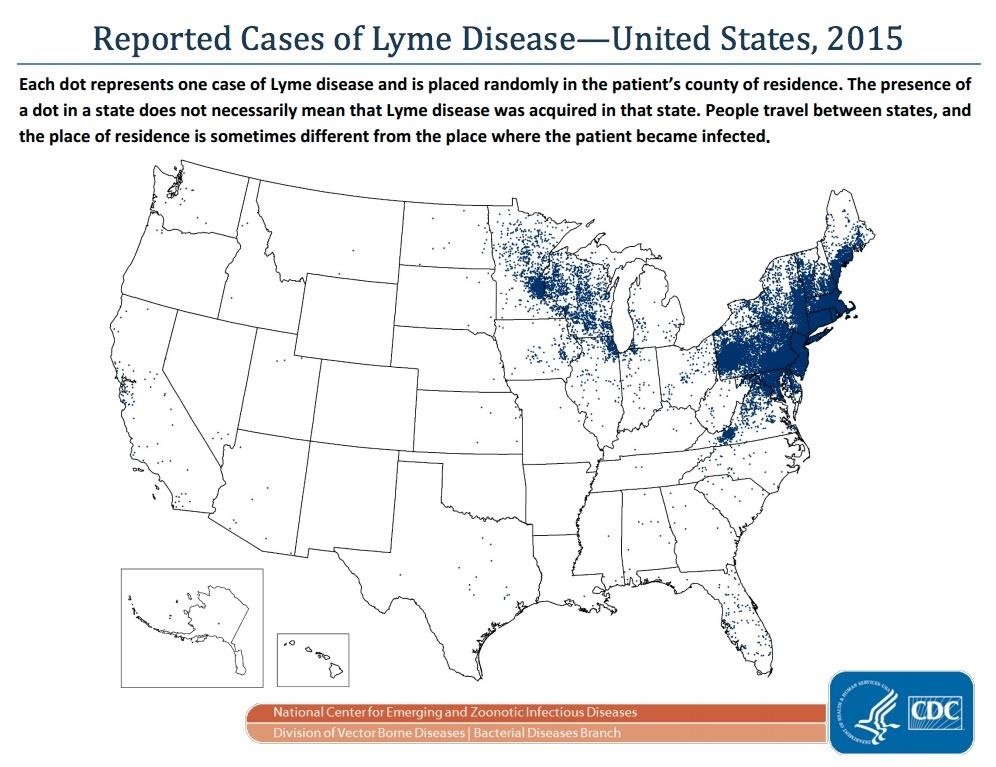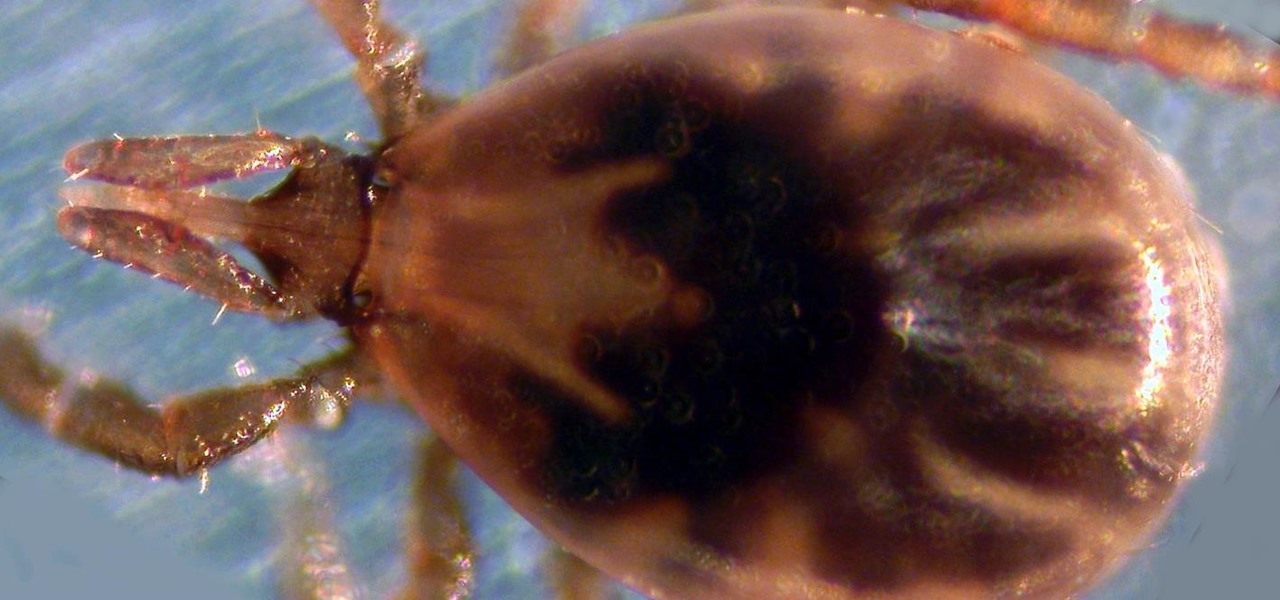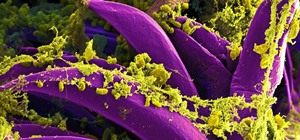Transmitted by ticks, Lyme disease is a serious infection that is probably headed your way. A recent study confirms the pathogen that causes Lyme disease is now established in nine national parks in the East, including Acadia and Shenandoah National Parks.
Ticks are arachnids, small members of the same class that spiders come from. With fossilized remains found encased in amber, ticks are a long-time resident of planet Earth. Afflicting humans with their blood-sucking habits for thousands of years, ticks are vectors, or carriers, of many diseases. Ticks are parasitic and need a blood meal to mature through their lifecycle.
In the United States, ticks transmit a number of serious conditions including:
• Colorado tick fever
• Rocky Mountain spotted fever
• babesiosis
• Heartland virus
• Borrelia miyamotoi
• Lyme disease
While not common throughout all of the the United States, Lyme disease, carried by Ixodes scapularis, known as blacklegged or deer ticks, continues to make inroads, with cases confirmed from coast to coast.
Lyme disease is the most commonly reported vector-borne illness in the country. In 2015, the Centers for Disease Control and Prevention (CDC) noted 83 reported cases in California and 3252 cases in New York.

Although diseases have been passed to humans from ticks for thousands of years, Lyme disease was not identified in the US until 1981. Named for the Connecticut town where the small population was plagued with symptoms like rash, fatigue, and symptoms of arthritis, Swiss medical entomologist Willy Burgdorfer first identified the corkscrew-shaped spirochete bacteria that cause Lyme disease.
While the bacteria Borrelia burgdorferi, named for Burgdorfer himself, was considered the microbe responsible for the transmission and spread of Lyme disease in the US, the CDC announced early last year that a second bacteria, Borrelia mayonii, is also spreading Lyme-like disease.
Both bacteria cause characteristic rash, joint pain, headache, and fever, but B. mayonii also causes vomiting, and there are usually higher concentrations of bacteria in the bloodstream of victims.

The Importance of Understanding Lyme Prevention
In the assessment of national parks in the Eastern portion of the country, researchers from the CDC and National Park Service conducted field studies to evaluate the risk of exposure humans face when visiting national parks. Using drag nets along trails in parks in Northeast and Mid-Atlantic states plus the District of Columbia, the researchers collected ticks from nine parks during the summer months, the season when humans are most likely to come in contact with ticks.
Because ticks have no effective means of movement, they wait on grasses and leaves alongside the habitat of hosts. Grasping plant material with their hind third and fourth legs, they stretch their first set of legs outward, identifying their host by vibration, moisture, heat, or smell. This outstretched posture is called questing. Late spring and early summer are peak times for ticks to quest.
Once onboard, ticks traverse the body looking for a niche from which to feed. Oftentimes choosing thinner skin in the folds of the groin, or armpit, ticks may disperse a small amount of anesthetic before cutting into the skin. Once attached, ticks slowly engorge on blood and dispense pathogens before dropping off.

Using DNA extraction, researchers evaluated collected tick samples for B. burgdorferi and other pathogens. During the two-year study, nine parks were sampled, collecting 1,305 Ixodes scapularis ticks in the nymph stage in 2014, and 1,282 nymphs in 2015.
At all sites, B. burgdorferi was detected. Oftentimes, multiple tick-borne pathogens were identified, underscoring the importance of locating and removing ticks from human and pet hosts before they have the opportunity to attach, feed, and transmit disease.
The study authors, hoping to raise awareness of disease vectors patiently waiting at trail side, offer suggestions to avoid ticks including:
- Avoid high risk habitats during peak questing activity of nymphs in the late spring into summer.
- Promote awareness of the danger of tick-borne diseases to park visitors and users.
- Encourage visitors to use products containing 20–30% DEET on clothing and exposed skin.
- Use permethrin products on clothing.
- Routinely check pets, tents, sleeping bags, and other gear for ticks.
- Avoid bushwhacking, sitting on trail side rocks, or leaning on trees and bushes by paths.
- Check yourself and family members for ticks; Shower within two hours to wash off crawling ticks.
- Use high heat to dry clothing to kill ticks.
If you remove a tick and later experience symptoms, or if you notice a rash after time spent in tick terrain, be sure to contact your doctor. Early treatment of Lyme disease with antibiotics is generally considered effective, yet some people with Lyme disease may suffer longer term fatigue and chronic symptoms. As yet, there is not a vaccine considered safe and effective for Lyme disease.
Ticks and Lyme disease are already at, or coming to, a location near you. Take steps to stay tick-free and help you and your family reduce your risk of infection.
Just updated your iPhone? You'll find new emoji, enhanced security, podcast transcripts, Apple Cash virtual numbers, and other useful features. There are even new additions hidden within Safari. Find out what's new and changed on your iPhone with the iOS 17.4 update.





























2 Comments
DEET doesn't always work.
You don't always get the ring mark if infected with lyme.
Ticks crawl up so always tuck your clothes in.
They wait in/on long grass bracken for something to pass before latching on then travel over you till they find a good spot to feed.
From experience of being bitten a lot they like the back of the knees, stomach, your love handles towards the rear, your arm pits and top of your arms and legs.
Never remove them by burning, using gel to smother or grabbing the body as this will make them regurgitate into you and more likely transfer any diseases they may be carrying.
To remove them use something that will grab them below the body not applying any pressure to the body at all just around the neck and twist and pull gently out then squash it. The best way is with a special tick removing tool which are very cheap.
I hate the little suckers in the UK in certain places and spreading fast we have horrid infestations.
Thanks for this, great information.
Share Your Thoughts